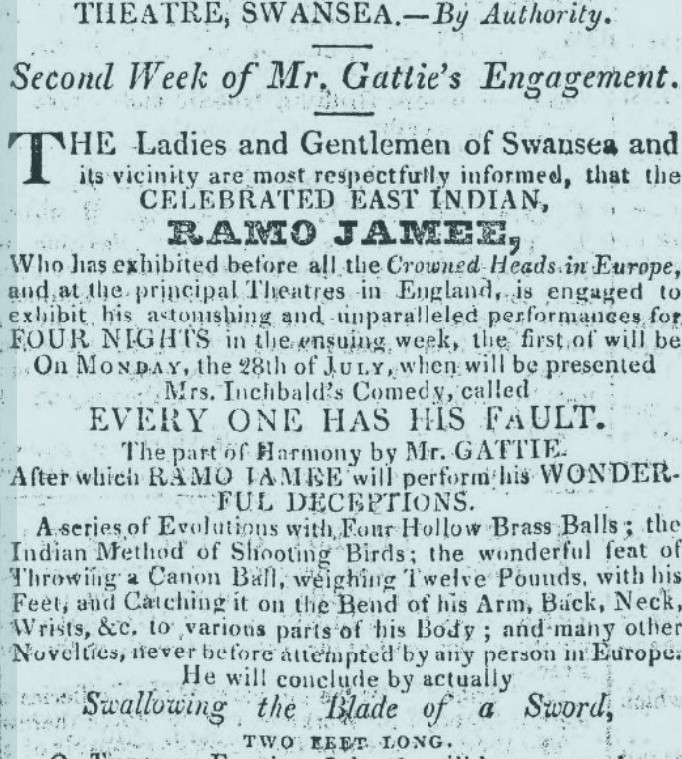On 4 December 1823 John Lloyd, the curate of St Mary’s Church baptised Helen, the child of Ramo and Helen Samee.

Does the name ring a bell? Ramo Samee (1791-1850), her father was a famous Indian juggler and magician.
He and his wife came over to Europe around 1810, and he made a tour of the United States in 1819. He was quite a showman:

Samee performed a trick he called “stringing beads with the mouth”, in which he “swallowed” a handful of beads and a piece of string, then pulled the beads out of his mouth, one by one, tied to the string. Samee was also a sword-swallower (swallowing 2 foot long swords!) and a fire-eater. In his fire act, he would light a piece of rope, place it on a plate, and proceed to “eat” it as a meal. He called it his “light dinner”.
William Hazlitt’s essay The Indian Jugglers (Table Talk, 1828) provides an interesting account although Ramo is not named.
In July 1823 he performed in Swansea as this advert in The Cambrian shows:
He died in 1850, so poor that his wife had to advertise for financial help to bury him.
The big question, of course, is what was his connection with Cardigan? Did he live here or was the family just passing through?
In the 1881 Census return for London (West Hackney) Helen (or Ellen by then) Samee’s birthplace is given as Cardigan, and the records of St Mary’s Church show that she was baptised here.

She and her mother are described as Needlewomen but life was hard and they both spent periods in the Workhouse during the second half of the nineteenth century (discharged on 26 Apr 1850 and again on 2 June 1882). Ellen Samee died in 1884.
If the Tivy-side had been published in 1823 I wonder what their headline would have been:
Daughter of famous Indian juggler baptised at St Mary’s, perhaps. Perhaps not.



